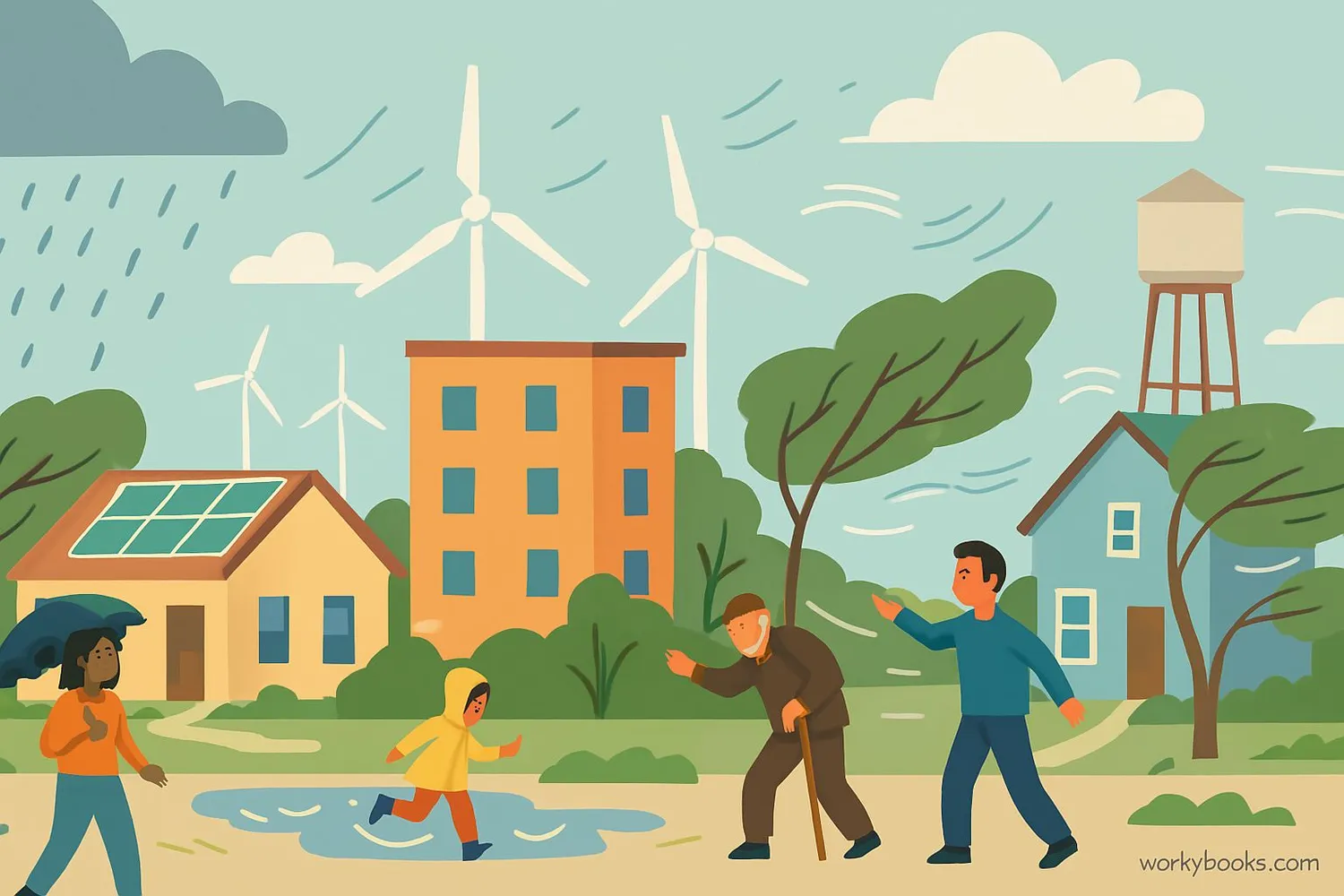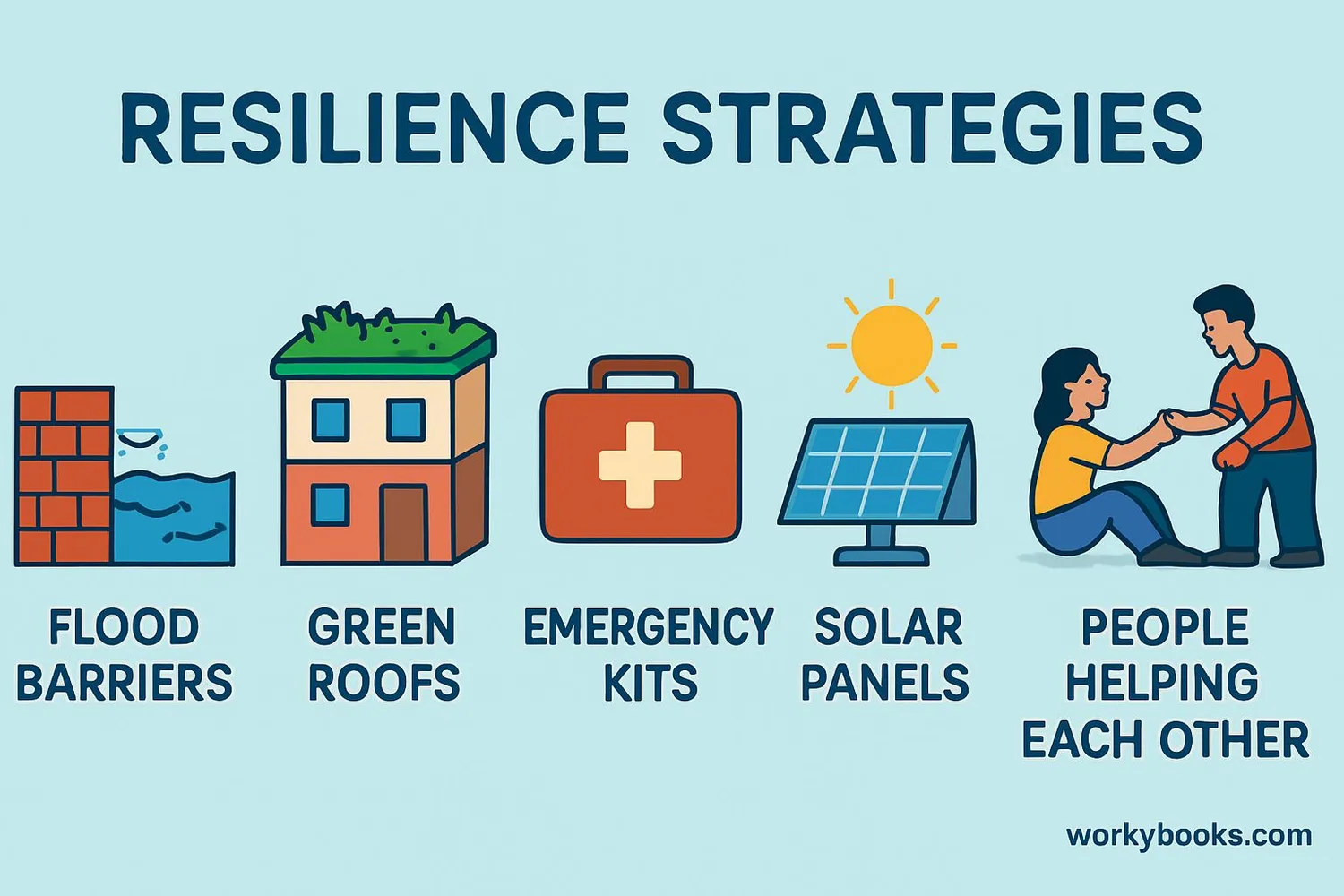Resilience - Definition, Examples, Quiz, FAQ, Trivia
Learn how communities prepare for and recover from challenges
What is Resilience?

Resilience is the ability to prepare for, recover from, and adapt to challenges like natural disasters, climate change, or other difficulties. It's like being a strong tree that bends in the wind but doesn't break.
In communities, resilience means having systems and plans in place so that when something challenging happens (like a big storm), people can bounce back quickly. It involves:
• Strong buildings and infrastructure
• Good emergency plans
• Community support systems
• Ways to adapt to changing conditions
Did You Know?
The word "resilience" comes from the Latin word "resilire" which means "to bounce back" - just like a rubber band!
Resilience Strategies

Communities use many different strategies to build resilience. These help them handle challenges while keeping people safe and services running. Here are some key approaches:
Strong Infrastructure
Building roads, bridges, and buildings that can withstand challenges
Emergency Plans
Having clear steps for what to do in different emergencies
Early Warning
Systems to alert people about coming challenges
Nature Solutions
Using plants, wetlands, and green spaces to reduce risks
Community
Neighbors knowing and helping each other
Good resilience planning looks at all parts of a community - from schools and hospitals to electricity and water systems. It's about making sure that when something challenging happens, the community can still function and recover quickly.
Real World Example
After Hurricane Sandy, New York City built flood barriers and upgraded subway entrances to prevent flooding. They also created more green spaces to absorb rainwater.
Why Resilience Matters

Building resilience is important for everyone because:
Safety
Protects people and property during challenges
Health
Keeps hospitals working and medicines available
Education
Helps schools stay open or reopen quickly
Resilience also helps with:
• Economic stability: Businesses can keep operating or reopen faster
• Environmental protection: Nature-based solutions help ecosystems
• Future planning: Communities can adapt as conditions change
• Equity: Makes sure all community members are protected
When communities invest in resilience before challenges happen, they save money and avoid bigger problems later. It's like wearing a helmet before riding a bike - it's much better than waiting until after a fall!
Resilience Knowledge Check
Test what you've learned about resilience with these questions:
Questions About Resilience
Here are answers to common questions about resilience:
Did You Know?
Discover interesting facts about resilience:
Nature's Resilience
Mangrove forests reduce wave energy by 66-99%, protecting coastal communities from storms. Just 100 meters of mangroves can lower wave height by 66%!
Ancient Resilience
The ancient Romans built aqueducts with extra capacity so water could keep flowing even if parts were damaged. This is an early example of resilient design!
Community Strength
After the 1995 Kobe earthquake in Japan, neighborhoods where people knew each other recovered faster because they organized help more effectively.
Smart Investment
For every $1 spent on disaster resilience, about $6 is saved in future disaster costs according to the National Institute of Building Sciences.





